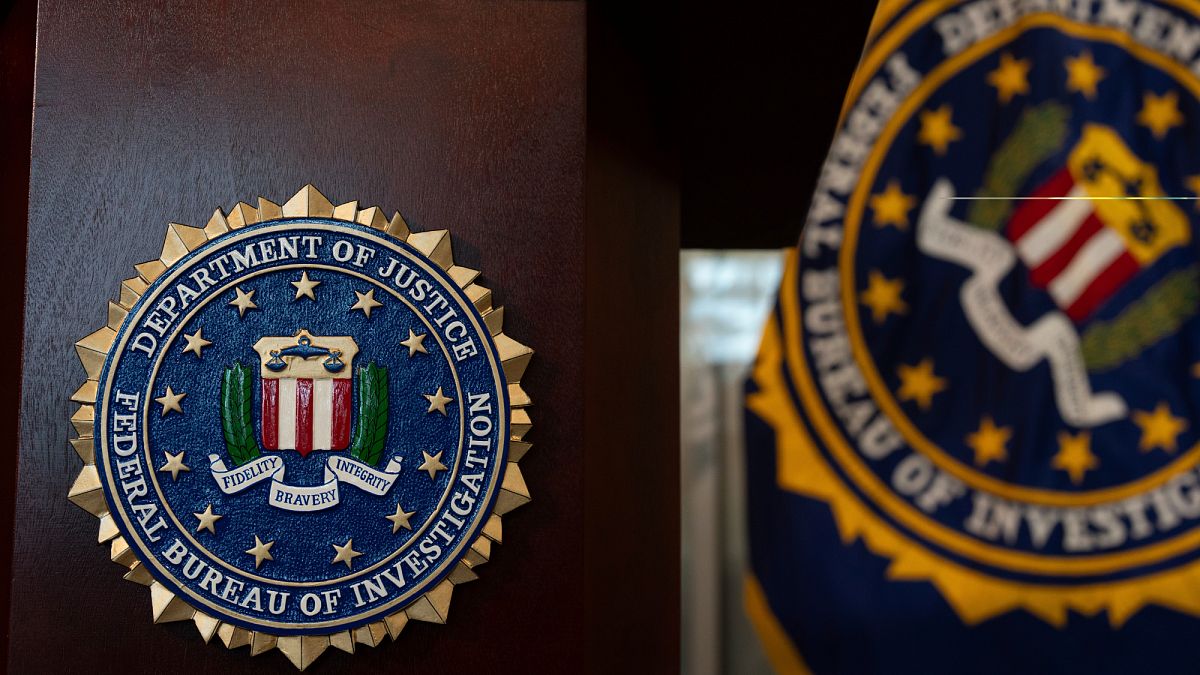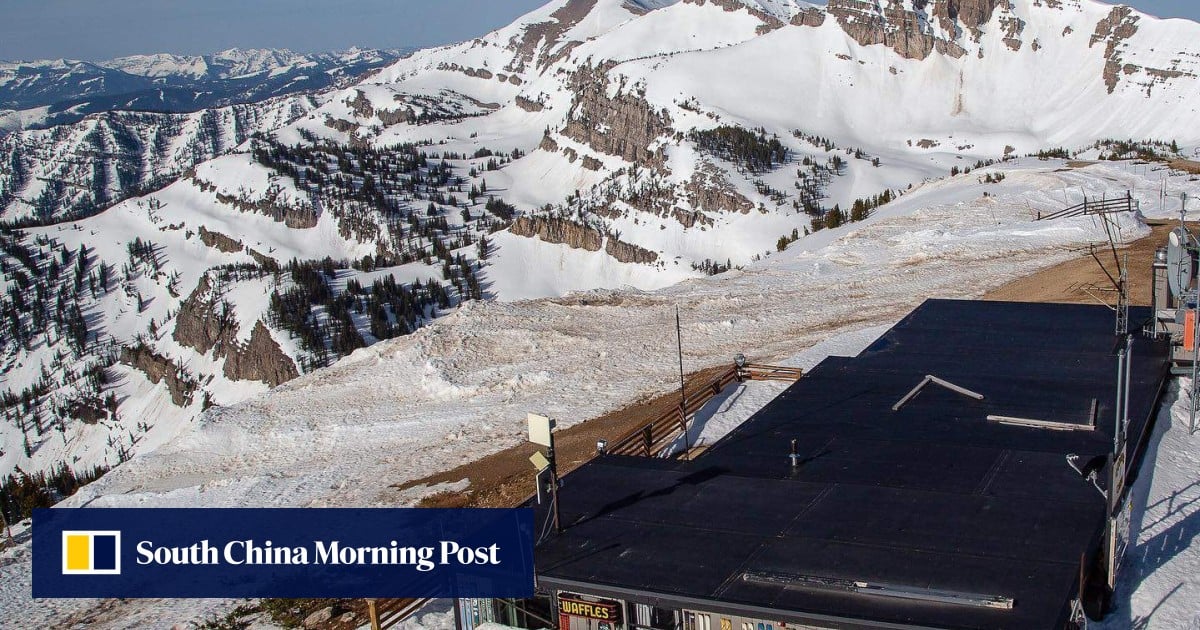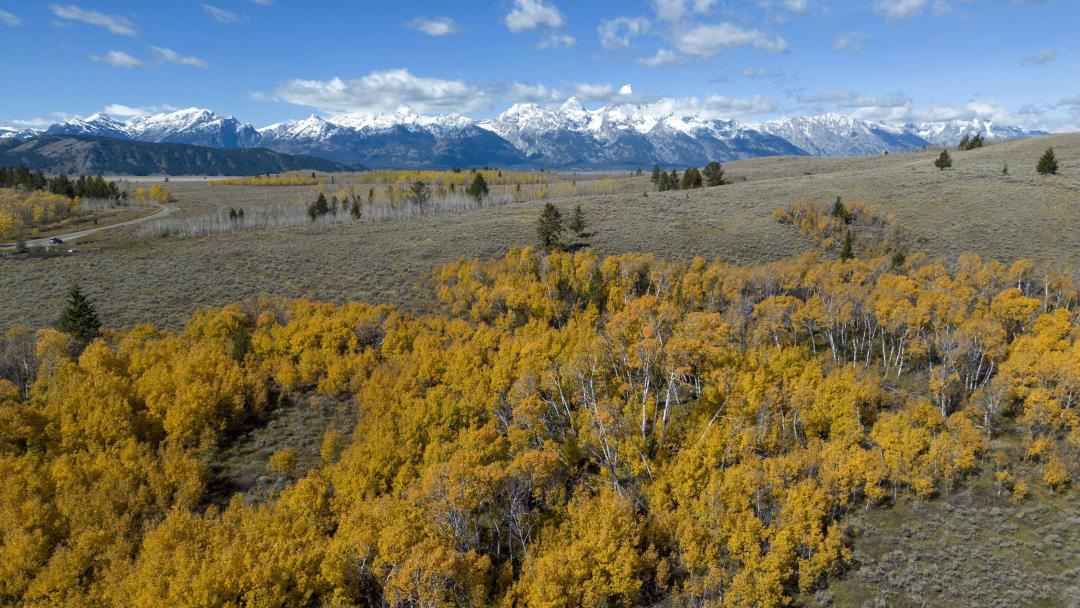Wyoming
Surprise attack by grizzly leads to closure of a Grand Teton National Park mountain

Moose, Wyo. — A grizzly bear attacked and seriously injured a man in western Wyoming’s Grand Teton National Park, prompting closure of a mountain there Monday.
The grizzly was one of two that surprised the 35-year-old man from Massachusetts on Sunday afternoon on Signal Mountain. Rescuers flew the injured man by helicopter to an ambulance that drove him to a nearby hospital.
He was expected to recover, park officials said in a statement, declining to identify him.
The statement did not detail the man’s injuries or say how he encountered the bear. Park officials closed a trail and the road to an overlook atop the 7,700-foot mountain.
The attack happened as Grand Teton and nearby Yellowstone National Park begin their busy summer tourist season.
Several such attacks occur each year as the region’s grizzly population has grown. Park officials urge people to give bears plenty of space, carry bear spray and avoid leaving out food that might attract bears.
The attack comes just days after a man in Canada suffered “significant injuries” after being attacked by a grizzly bear while hunting with his father.
Last fall, a Canadian couple and their dog were killed by a grizzly bear while backpacking in Banff National Park. Just weeks before that, a hunter in Montana was severely mauled by a grizzly bear.
Last July, a grizzly bear fatally mauled a woman on a forest trail west of Yellowstone National Park. The bear was later euthanized after breaking into a house near West Yellowstone in August.
Also that month, a 21-year-old woman who was planting trees was seriously injured by a bear in British Columbia. Canadian officials could not locate the animal but believe it was a grizzly bear that attacked the woman.
In October 2022, a grizzly bear attacked and injured two college wrestlers in the Shoshone National Forest in northwestern Wyoming.
Grizzly bears in the 48 contiguous states are protected as a threatened species, according to the U.S. Fish and Wildlife Service.
Last month, the U.S. National Park Service announced it was launching a campaign to capture grizzly bears in Yellowstone Park for research purposes. The agency urged the public to steer clear of areas with traps, which would be clearly marked

Wyoming
Welcome home: Wyoming Army Guard 2-300th arrive at Casper airport after months-long deployment – County 17

Wyoming
(PHOTOS) KWHS sends off largest graduating class in school history

CASPER, Wyo. – Friday night was one for the record books for Kelly Walsh High School.
Some 476 students graduated from KWHS for the 2025 school year, according to principal Mike Britt, making it what they believe to be the largest class in the school’s 56-year history.
The Ford Wyoming Center was packed with graduates, students, friends and family on Friday during the last of four graduation ceremonies in the Natrona County School District.
The school’s choirs and band performed, and addresses by Emerson Levin and Haylie Williams.






































Related
Wyoming
Threatened federal funding for education, workforce programs spark concern among Wyoming tribes – WyoFile

A national narrative that Job Corps isn’t working couldn’t be further from the truth in central Wyoming, according to Jared Baldes, a field director and former carpentry instructor at Wind River Job Corps in Riverton.
In a region of the state where high school dropout rates are high and traditional college paths aren’t the norm, Baldes said, Wind River Job Corps creates a viable pipeline for students to enter the workforce and earn high wages and good benefits. It helps keep youths out of the juvenile justice system, and is an important avenue for Wind River Indian Reservation youth.
“Just in my trade alone, I’ve placed 15 students this year into jobs, six of them Native American,” Baldes told members of the Legislature’s Select Committee on Tribal Affairs last week. “So the national narrative that Job Corps isn’t working is very wrong. Job Corps is working, and it’s very effective, and it’s changing lives.”
Now, however, the free career training program for low-income young adults is in danger. The Trump administration proposed a significant cut to the Job Corps program following an initial call to eliminate funding entirely. The U.S. Department of Labor announced Thursday it will pause operations at contractor-operated Job Corps centers nationwide.
“It would be very unfortunate not to be able to continue that pipeline to small businesses and businesses around the state for these young men and women being trained by very good instructors,” Baldes said.
Job Corps’ demise was among a chorus of warning bells rung during the meeting last week in Fort Washakie. Though the topic was not on the agenda, tribal representatives repeatedly raised worries that federal funding could end or decline for programs vital to Native communities.
The tenor underscored deep trepidation about impacts that could ripple from federal efforts to cut spending.
Wind River Job Corps has clearly been a positive force in the state, committee member Rep. Ivan Posey, D-Fort Washakie, said. He remembered cedaring the dorms with his brother when the facility opened.
“I hope that [Wyoming’s congressional] delegation realizes that it’s been a boon to our economy here, and that it’s been a good thing for us,” he said. “It changes people’s lives.”
Education
School leaders are keeping close watch on potential cuts that could impact tribal education, they told the committee.
Though the Trump administration has apparently backed away from a proposal to eliminate Head Start funding, the threat remains, Eastern Shoshone Business Council Wayland Large said.
“On this reservation, each district has a Head Start — one in Fort Washakie, Ethete and Arapahoe,” Large said. The program, which is under the U.S. Department of Health and Human Services, provides early childhood education, health, nutrition and parent services to low-income families with children from birth to age 5.
Fremont County School District 38 Superintendent Curt Mayer, meanwhile, said his district is concerned about Impact Aid funding. That federal program provides financial assistance to local school districts with concentrations of children living on tribal lands as well as military bases and other federal property.
District 38 officials travel to Washington, D.C. twice a year to secure the funding, Mayer said, which is used to fund counselors, nurses, school resource officers and cultural staff in the Arapahoe schools.

Deb Smith, superintendent of the Fort Washakie Schools in Fremont County School District 21, echoed that concern.
“Impact Aid is huge for us,” Smith said. “So we’ve all been very worried about the funding, if it’s going to be there in the future.”
Committee chairman Sen. Cale Case, R-Lander, asked about other implications.
“It seems that the situation is evolving with respect to our federal partners in education,” Case said, “and I’m wondering what kind of implications are there, for example, with the elimination of the Department of Education?”
If the DOE goes away, Smith said, the hope is that Impact Aid can survive in a different federal department. Other areas of concern include federal funding for free and reduced lunch programs, Title I funds that help schools with high percentages of low-income students and similar programs.
“We can’t provide some of the programming and resources without that funding,” she said. “And it’s scary. It’s very scary.”
Lawmakers listened sympathetically to Smith and others’ concerns but remained relatively mum.
Higher ed
Central Wyoming College in Riverton has the state’s largest Trio Program, CWC President Dr. Brad Tyndall told the committee. The federal program offers outreach and services designed to provide pre-college services for people from disadvantaged backgrounds.
There are roughly 650 eligible students in the CWC service area, Tyndall said, and the college works with them by going through the high schools to identify and help students.
“The recommendation from the White House budget is to cut all of that, and that would be devastating to our community, and especially our Native Americans, but it would be everybody,” he said. “The economic impact to the state is huge, and begs the question: ‘What do we do if that money goes away as a state?’”
College officials are also concerned about Native American-Serving Nontribal Institutions Program, or NASNTI, grants, Tyndall said, which are on hold.
“But NASNTI is kind of dwarfed by Trio,” he said.

The college is also concerned about some changes to the Pell Grant availability in the federal budget bill, CWC Vice President of Student Affairs Coralina Daly said.
The changes would require students to take 15 credits per semester.
With many at-risk students, she said, taking 12 credits “is a significant load already. To ask them to take another class is really impeding their ability to be successful.”
There also is a proposal to cut Pell for part-time students, she added, “so all of these students that we know who are working and have these other obligations are going to have less access to aid.”
Federal work study is also slated to be canceled in the budget bill, she said. “So that is another opportunity that would go away.”
Of the funding coming to CWC’s self-identified tribal students, Daly said, “71% of those funds are coming from federal sources. That is disproportionately larger than our overall population.
“I think it’s important to note those federal funds are incredibly important for our tribal students,” she said.
The federal budget bill, officially called the One Big, Beautiful Bill Act, passed the U.S. House last week. It must still clear the Senate.
Uncertainty
Other areas of concern included Medicaid and the Supplemental Nutrition Assistance Program, which are both targeted for cuts.
Conversations during the committee meeting also highlighted a high level of confusion related to when or how federal money will come through, the fact that some funds that were frozen have been released and if and how court intervention will impact programs.

For example, staff in the federal department that oversees the Low Income Home Energy Assistance Program, or LIEAP, were eliminated this spring, spurring worries that the program would end.
“It does help our elders and the community with the gas and the lights,” Eastern Shoshone Business Council member Latonna Snyder said. “So that’s a big issue.”
However, LIEAP in Wyoming has been funded through September, the Wyoming Department of Family Services announced this spring, adding that for the time being, no changes were anticipated.
-

 News1 week ago
News1 week agoRead the Full ‘Make America Healthy Again’ Report
-
Movie Reviews1 week ago
Movie Review: 'Pee-wee as Himself' unmasks Paul Reubens
-

 Technology1 week ago
Technology1 week agoNow you can watch the Internet Archive preserve documents in real time
-

 World1 week ago
World1 week agoNeo-Nazi cult leader extradited to US for plot to kill Jewish children
-

 Technology1 week ago
Technology1 week agoDiscord might use AI to help you catch up on conversations
-

 Movie Reviews1 week ago
Movie Reviews1 week agoMovie review: 'Dogma' re-release highlights thoughtful script – UPI.com
-

 Business1 week ago
Business1 week agoPlastic Spoons, Umbrellas, Violins: A Guide to What Americans Buy From China
-

 Science1 week ago
Science1 week agoTrump Has Cut Science Funding to Its Lowest Level in Decades



















